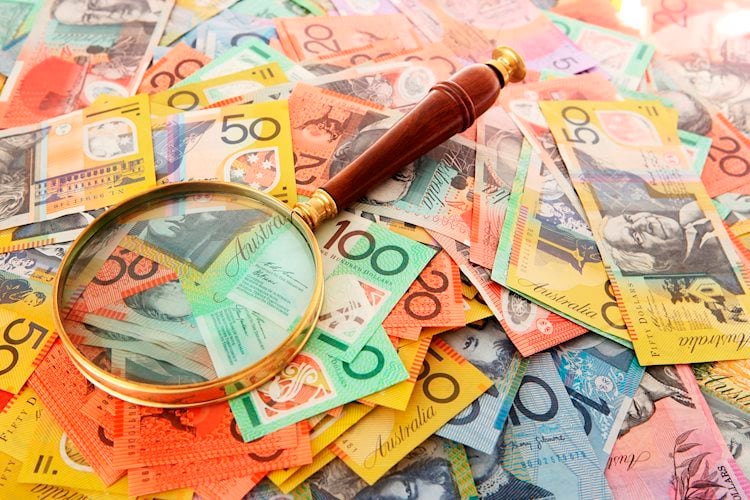- AUD/USD recovers sharply from 0.6820 as the Australian Dollar strengthens.
- Investors await Fed Powell’s speech for fresh interest rate guidance.
- The core PCE inflation is expected to have accelerated to 2.7% in August.
The AUD/USD pair bounces back strongly from Wednesday’s low of 0.6820 to near the round-level resistance of 0.6900 in Thursday’s North American session. The Aussie asset strengthens amid upbeat Australian Dollar (AUD).
The Aussie Dollar performs strongly as the Reserve Bank of Australia (RBA) is expected to leave interest rates at their current levels for the entire year. In the monetary policy on Tuesday, the RBA kept its Official Cash Rate (OCR) steady to 4.35% and conveyed that the option of more rate hikes was not on the table.
Meanwhile, the US Dollar (USD) exhibits a sluggish performance near the crucial resistance of 101.00. The US Dollar struggles to extend recovery as investors look for Federal Reserve (Fed) Chair Jerome Powell’s speech to get fresh cues on the interest rate outlook.
Currently, financial market participants expect that the Fed could deliver one another 50 basis points (bps) interest rate cut in November. Last week, the Fed started the policy-easing cycle with a larger-than-usual interest rate cut of 50 bps to 4.75%-5.00%.
Going forward, investors will focus on the United States (US) Personal Consumption Expenditure Price Index (PCE) data for August, which will be published on Friday.
Economists estimate the core PCE inflation data, a Fed’s preferred inflation gauge, to have grown at a faster rate of 2.7% from 2.6% in July. Signs of inflation remaining persistent would prompt market expectations for the Federal Reserve (Fed) to cut interest rates by 50 basis points (bps) in the November meeting. On the contrary, hot figures would dampen them.
Australian Dollar FAQs
One of the most significant factors for the Australian Dollar (AUD) is the level of interest rates set by the Reserve Bank of Australia (RBA). Because Australia is a resource-rich country another key driver is the price of its biggest export, Iron Ore. The health of the Chinese economy, its largest trading partner, is a factor, as well as inflation in Australia, its growth rate and Trade Balance. Market sentiment – whether investors are taking on more risky assets (risk-on) or seeking safe-havens (risk-off) – is also a factor, with risk-on positive for AUD.
The Reserve Bank of Australia (RBA) influences the Australian Dollar (AUD) by setting the level of interest rates that Australian banks can lend to each other. This influences the level of interest rates in the economy as a whole. The main goal of the RBA is to maintain a stable inflation rate of 2-3% by adjusting interest rates up or down. Relatively high interest rates compared to other major central banks support the AUD, and the opposite for relatively low. The RBA can also use quantitative easing and tightening to influence credit conditions, with the former AUD-negative and the latter AUD-positive.
China is Australia’s largest trading partner so the health of the Chinese economy is a major influence on the value of the Australian Dollar (AUD). When the Chinese economy is doing well it purchases more raw materials, goods and services from Australia, lifting demand for the AUD, and pushing up its value. The opposite is the case when the Chinese economy is not growing as fast as expected. Positive or negative surprises in Chinese growth data, therefore, often have a direct impact on the Australian Dollar and its pairs.
Iron Ore is Australia’s largest export, accounting for $118 billion a year according to data from 2021, with China as its primary destination. The price of Iron Ore, therefore, can be a driver of the Australian Dollar. Generally, if the price of Iron Ore rises, AUD also goes up, as aggregate demand for the currency increases. The opposite is the case if the price of Iron Ore falls. Higher Iron Ore prices also tend to result in a greater likelihood of a positive Trade Balance for Australia, which is also positive of the AUD.
The Trade Balance, which is the difference between what a country earns from its exports versus what it pays for its imports, is another factor that can influence the value of the Australian Dollar. If Australia produces highly sought after exports, then its currency will gain in value purely from the surplus demand created from foreign buyers seeking to purchase its exports versus what it spends to purchase imports. Therefore, a positive net Trade Balance strengthens the AUD, with the opposite effect if the Trade Balance is negative.
